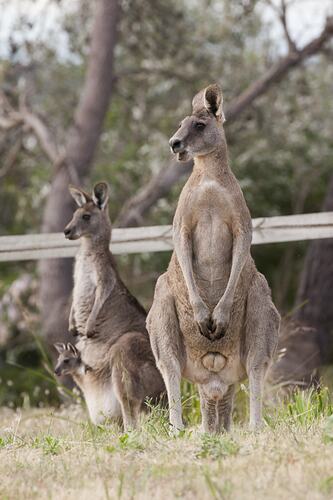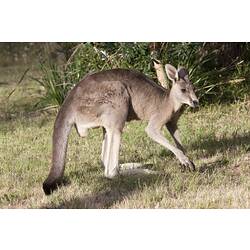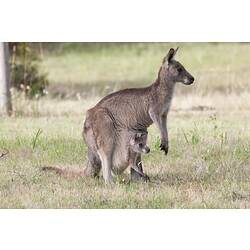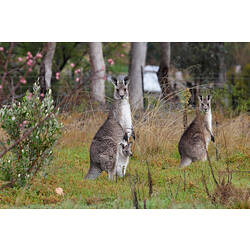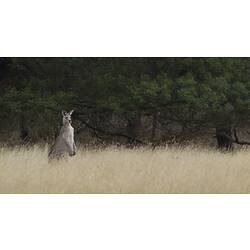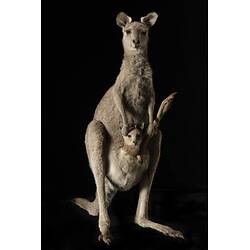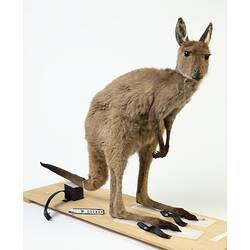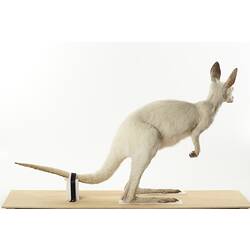General Description
Body fur grey with paler grey underneath. Tail often black at the tip. Hops with head held high and tail curved upwards. Body up to 1.3 m, tail up to 1.1 m. Often confused with the Western Grey Kangaroo.
Biology
Eastern Grey Kangaroos feed mainly on grasses and herbs, but sometimes eat leaves from trees and shrubs. They are active mostly from dusk to dawn, often in large groups (mobs). At birth kangaroos are about the size of a jelly bean, blind and hairless, they are known as neonates at this stage. They crawl into their mother's pouch where they continue to develop until they emerge some months later as a joey. Eastern Grey Kanagroo joeys leave the pouch permanently at around 44 weeks old. The females start breeding at around 18 months old and can breed all year round, though young are mostly born in the late autumn and early winter.
Distribution
Eastern mainland Australia and Tasmania.
Habitat
Grassy woodlands and forests, also parklands and golf courses.
More Information
-
Animal Type
-
Animal SubType
-
Brief Id
A kangaroo commonly seen in groups in open areas especially around dawn and dusk. Distinguished by its large size and light grey fur.
-
Colours
Grey, White
-
Habitats
Wetland, Urban, DryForest, WetForest, Woodland, Mallee, Grassland
-
Where To Look
-
When Active
Nocturnal, Diurnal
-
Diet
Herbivore
-
Diet Categories
Grasses, Herbs, Plants
-
Endemicity
-
Conservation Statuses
CITES: Not listed, FFG Threatened List: Not listed, EPBC Act 1999: Not listed, IUCN Red List: Least Concern
-
Taxon Name
-
Scientific Author
Shaw, 1790
-
Common Name
Eastern Grey Kangaroo
-
Kingdom
-
Phylum
-
Subphylum
-
Class
-
Superorder
-
Order
-
Suborder
-
Family
-
Subfamily
-
Genus
-
Species Name
giganteus
